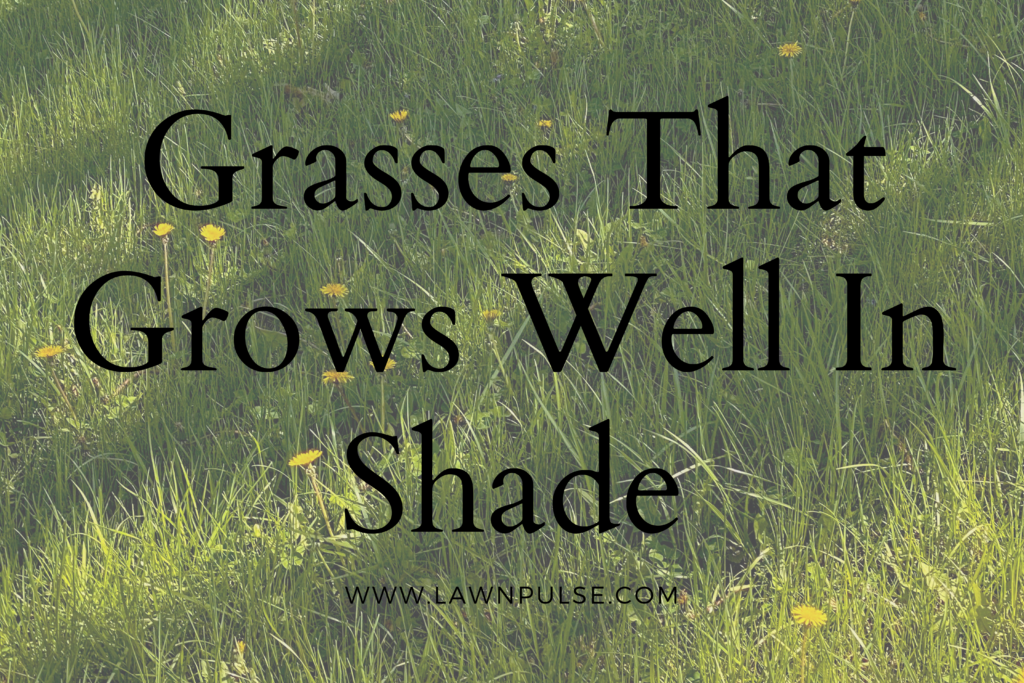Establishing a lush, green lawn can be a challenge, particularly when dealing with shaded areas. However, understanding the various types of grasses that grow well in shade can make the task significantly more manageable. This article delves into the distinctive types of lawn grass that are well-adapted to flourish in shaded spaces, ensuring your lawn remains vibrant and healthy even in less sun-exposed areas.
Before diving into specifics, it is crucial to understand the intricacies of shade-tolerant grass. Not all shaded conditions are the same; there’s light shade, partial shade, and heavy shade. The type of shade, along with other factors such as the regional climate, soil type, and maintenance, plays a crucial role in determining the best grass type for your lawn.
Various grass types, known for their shade tolerance, are discussed in this article. They include, but are not limited to:
- St. Augustine Grass: Known for its shade tolerance and ease of growth in various soil types.Fine Fescue: Highly adaptable to cooler climates and shaded areas.
- Zoysia Grass: An excellent choice for partially shaded areas, particularly in warmer regions.
- Tall Fescue: It is highly shade-tolerant and suitable for different climates.
However, it’s important to remember that even the most shade-tolerant grasses require some sunlight for photosynthesis. Thus, understanding the optimal care for shade-tolerant grasses is as essential as selecting the right type. The subsequent sections will provide a comprehensive guide to help you choose the best-suited shade-tolerant grass for your lawn.
Cool Season Grasses: Fine Fescues, Kentucky Bluegrass, and More
Various species of cool-season grasses have evolved over the centuries to cope with diverse environmental conditions, including low-light environments. When selecting the right grass for shaded areas in your yard, one must consider their shade tolerance and overall performance. Here are some of the top shade-tolerant cool-season grasses.
Fine Fescues
Among the most shade-tolerant of cool-season grasses, Fine Fescues are especially adept at thriving in low-light conditions. They include several sub-types such as creeping red fescue, chewings fescue, hard fescue, and sheep fescue. Their fine, narrow blades create a dense, carpet-like lawn surface. Moreover, they require less fertilization compared to other cool-season grasses and tolerate dry soil well.
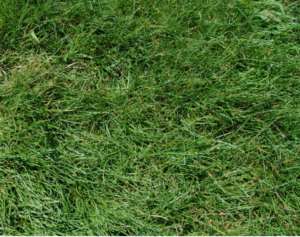
Kentucky Bluegrass
While not as shade-tolerant as Fine Fescues, Kentucky Bluegrass can survive in moderately shaded areas if adequately watered and cared for. It’s known for its rich, dark green color and dense, luxurious texture. Although it may require more maintenance than some other types, its unmatched beauty makes it a popular choice for many homeowners.

Rough Bluegrass
Rough Bluegrass is another shade-loving variety that can form a lush, green carpet even in heavily shaded areas. Despite the name, it’s not related to Kentucky Bluegrass. This grass is light green with a fine texture and is best suited for wet, shady areas. However, it may struggle in areas with hot, dry summers.
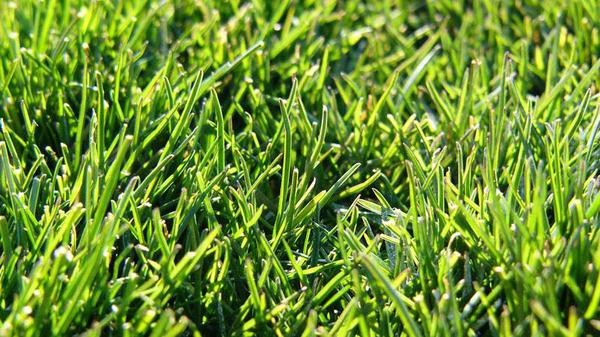
Tall Fescue
Tall Fescue is a versatile grass that can tolerate a variety of conditions, including shade. With deeper roots than many other cool-season grasses, it can withstand periods of drought. Its broad, coarse blades create a rich green lawn that’s highly tolerant of foot traffic. However, it may not provide as dense a cover as Kentucky Bluegrass or Fine Fescue.
Choosing the right grass for shaded areas in your landscape depends on many factors, including your climate, soil type, and the level of care you’re willing to provide. While these grasses are known for their shade tolerance, all grasses need some light to photosynthesize and grow. Therefore, it’s essential to ensure your chosen grass receives at least three to four hours of filtered or dappled sunlight each day. If the shade in your yard is too dense, consider other landscaping options such as shade-tolerant ground cover plants or hardscaping.

Top Shade-Tolerant Warm Season Grasses: Zoysia and St. Augustine
It is not true that all warm-season grasses can flourish in areas with shadows. Certain species, however, exhibit remarkable resilience and adaptability, allowing them to grow robustly despite receiving less sunlight. Among these are Zoysia, St. Augustine, and a few other notable varieties.
Zoysia Grass
Zoysia, a native grass of Asia, is renowned for its shade tolerance. The grass thrives in various conditions, demonstrating its versatility. Zoysia grass prefers sun but can also flourish in moderate shade. Its dense growth habit tends to crowd out most weeds, and it exhibits a high disease resistance, making it an excellent choice for shaded lawns in warmer climates.
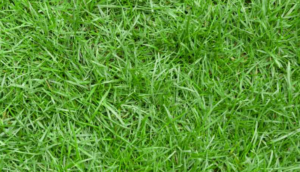
St. Augustine Grass
St. Augustine is another warm-season grass known for its shade tolerance. It is a popular choice for lawns located within the southern United States due to its ability to withstand high temperatures. While it prefers full sunlight, St. Augustine grass can grow in shaded areas as long as it receives a minimum of three to four hours of sunlight daily. Its thick, coarse blades help it to stand tall in shaded areas, enhancing its ability to photosynthesize efficiently despite less exposure to sunlight.
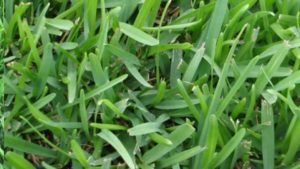
How to Properly Plant and Maintain Shade-Tolerant Grass
Understanding how to properly plant and maintain shade-tolerant grass is integral to achieving a lush, green lawn in areas with limited sunlight. It requires a strategic approach that considers the unique growth requirements of shade-tolerant grass varieties.
The first step is the selection of the right grass type. Cool-season grasses, such as Fine Fescue and Kentucky Bluegrass, and warm-season grasses, like St. Augustine and Zoysia, are known for their shade tolerance. However, it’s crucial to choose a grass type that’s not only shade-tolerant but also suitable for your specific climate and soil conditions.
Proper planting is the next critical step. For the best results, follow these steps:
- Prepare the soil: Start by removing any rocks, sticks, or other debris from the planting area. Then, till the soil to a depth of 4-6 inches to loosen it up and improve aeration. If the soil is too heavy, consider enriching it with organic matter like compost to improve its drainage and fertility.
- Sow the seeds or lay the sod: Spread the grass seeds evenly across the prepared soil. If you’re using sod, lay it tightly against each other to prevent gaps. Whether you’re seeding or sodding, it’s essential to establish good contact between the grass and the soil for successful establishment.
- Water adequately: After planting, water the grass thoroughly. However, be mindful not to overwater as it could lead to diseases. The key is to keep the soil consistently moist but not waterlogged.
Once your grass is established, proper maintenance practices come into play. These include regular mowing, fertilizing, watering, and disease control.
- Mowing: Keep the grass taller in shaded areas. Longer grass blades have more surface area for photosynthesis, which is beneficial in low-light conditions.
- Fertilizing: Use a slow-release, balanced fertilizer to provide the necessary nutrients. Remember,
Dealing with Common Shade-Related Problems: Pests, Diseases, and Weeds
Shade-related issues can cause significant challenges in maintaining a healthy lawn. Pests, diseases, and weeds often thrive in shaded areas due to the damp and cool conditions. However, with the right knowledge and methods, homeowners can effectively manage these problems and ensure the healthy growth of their lawn grass.
Pests
Shaded areas are a haven for pests like grubs, snails, and slugs, which can cause extensive damage to the grass. Using eco-friendly pest control methods, such as introducing beneficial insects or applying natural repellents, can significantly lessen these problems. Periodic inspection of the lawn can also help detect pest infestation at an early stage.
Diseases
Grass in shaded areas is prone to various diseases due to reduced sunlight and increased moisture. Common diseases include Brown Patch, Dollar Spot, and Red Thread. It’s crucial to identify the disease accurately for proper treatment. Fungicides can control most of these diseases, but the best strategy is prevention through proper lawn care practices.
Weeds
Weeds can become a major problem in shaded lawns as they compete with the grass for nutrients. Some common shade-loving weeds include Creeping Charlie and Bishop’s Weed. Regular weeding and the use of pre-emergent herbicides can effectively control their growth.
| Problem | Common Types | Control Measures |
|---|---|---|
| Pests | Grubs, Snails, Slugs | Eco-friendly pest control methods, periodic inspection |
| Diseases | Brown Patch, Dollar Spot, Red Thread | Accurate identification, use of fungicides, proper lawn care |
| Weeds | Creeping Charlie, Bishop’s Weed | Regular weeding, use of pre-emergent herbicides |
Frequently asked questions about shade-tolerant grasses
ade-tolerant grasses are a popular choice for homeowners and landscapers who have areas on their property that do not receive full sunlight. These grass varieties have adapted to grow well under trees, in the shadows of buildings, or in any other location where light levels are low. However, many questions often arise regarding the selection, planting, and maintenance of these shade-loving grasses.
What are some types of shade-tolerant grass?
The type of shade-tolerant grass that will thrive best in your yard depends on your specific climate and soil conditions. Some well-regarded options include:
- St. Augustine Grass: This warm-season grass is known for its ability to thrive in both sun and shade. It is a popular choice in southern states.
- Fine Fescue: This cool-season grass is a top choice for areas that receive little sunlight. It is also resistant to drought conditions.
- Zoysia Grass: This grass type can handle a lower light environment, but also can withstand heat and occasional dry spells.
- Tall Fescue: This grass prefers cooler weather and can tolerate some shade, making it a versatile pick for many homeowners.
How can I maintain shade-tolerant grass?
Maintenance of shade-tolerant grass requires some specific practices. These include:
- Watering: Shade-tolerant grasses generally require less frequent watering than their sun-loving counterparts. However, they need to be watered deeply to encourage root growth.
- Mowing: These grass types should be mowed at a slightly higher setting to allow them to make the most of the limited sunlight they receive.
- Fertilizing: Fertilization should be done sparingly as excessive nutrients can lead to disease problems.
Do these grass types require less sunlight to photosynthesize?
No, shade-tolerant grasses do not photosynthesize with less sunlight. They have simply adapted to grow under lower light conditions by developing characteristics such as increased chlorophyll content and broader leaf blades to maximize the sunlight they do receive.
Can shade-tolerant grasses survive in full sun?
While shade-tolerant grasses are, by definition, designed to thrive in lower-light conditions, some varieties also do well in full sun. For example, St. Augustine and Zoysia grasses are known for their ability to tolerate both sun and shade. However, the grass may need additional water and care when grown in full sun.
What type of grass grows best in the shade?
The type of grass that grows best in the shade largely depends on the climate and soil conditions in your area. However, some grass types have demonstrated superior shade tolerance. These include varieties like St. Augustine, Zoysia, and Fine Fescue for cool climates, as well as Ryegrass and Kentucky bluegrass for warmer climates.
How much sunlight do shade-tolerant grasses need?
Even shade-tolerant grass types do need some amount of sunlight to grow. It’s generally recommended that these grasses receive at least 3-4 hours of direct sunlight each day. However, the specific requirement can vary depending on the grass type. For instance, St. Augustine grass can survive with less sunlight compared to Kentucky bluegrass.
What can be done to improve the growth of grass in shaded areas?
There are several strategies you can adopt to enhance the growth of grass in shaded regions. Regular watering and feeding can help, as well as improving soil aeration and drainage. Additionally, trimming back overhanging branches can let more sunlight reach the grass. Lastly, choosing the right shade-tolerant grass species can significantly improve the chances of success.
Can shade-tolerant grasses withstand heavy foot traffic?
Shade-tolerant grasses vary in their ability to withstand foot traffic. For example, Zoysia grass is quite durable and can tolerate moderate to high foot traffic. On the other hand, Fine Fescue is less resilient and might not be the best choice for high-traffic areas.
Conclusion
In conclusion, while shaded areas can pose certain challenges for lawn grass, these can be effectively managed with the right strategies. Continuous monitoring and proactive control measures are the keys to maintaining a healthy and vibrant lawn despite the shade.

